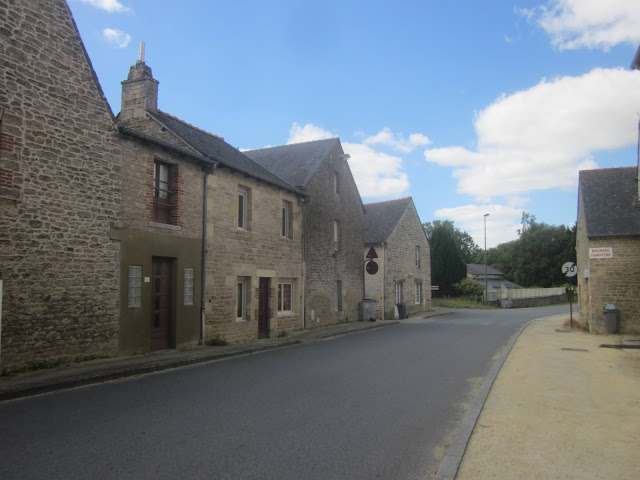In a busy writing month I have at last found time to get out and make a visit to the Abbaye de Boquen in Cotes d'Armor. This Cistercian foundation was built in 1137, five years after the Abbaye du Relec in Finistère, both daughter-houses of the monastery at Bégard. They have evolved rather differently, however, despite many basic similarities. Boquen went through the same phases of early development and commendatory rule (from the 1490s to the Revolution) before dissolution in 1790. But it is in the 20th century that its unique fate emerged.


After lying in ruins for many years, the site was bought in 1934 by Alexis Presse, former abbot of the abbey of Tamié (and a most remarakble man), with the help of members of his family. He performed the immense task of restoring the ancient building and creating a community dedicated to the purer original principles of the Order. He also celebrated mass in Breton as well as Latin. This enjoyed considerable success until it was time for Dom Alexis to hand over the reins. He chose badly, as Bernard Besret, taking charge at the age of 29, soon determined to broaden the brief of the abbey to invite in all kinds of religious influences, to the chagrin of traditionalists and eventually the Catholic powers that be who removed him from office.
 |
| Mill house |
 |
| West door |
Today the site is run by the ecumenical Communauté du Chemin neuf. The majority of the abbey structures are off limit to casual visitors, being reserved for the community and guests at their events. An old mill houses a permanent exhibition about the history of the abbey and from there a sylvan track leads on round through the trees to approach the west face of church itself directly. Inside the simplicity of the original is maintained, particularly evident in the transept. Before the high altar is the tombstone which is said to mark the grave of Gilles de Bretagne, brother of Duke François I, who was murdered in 1450 at the nearby Chateau de Hunaudaye after political intrigues with the English.



The large cloister area is bounded by heavily restored buildings housing the modern community, with the two remaining sections of covered passage glassed in. Only the fragmentary remains of the chapter house with its evocative carvings give any sense of the distant past in this strangely uninspiring contemporary manifestation of an ancient site of worship. A cavernous chapel of Saint Bruno can also be seen.The rather remote setting on the edge of the forest of Boquen, with streams around the abbey walls, is a more potent reminder of original Cistercian ideals. The Abbaye du Relec, by contrast, has preserved less and offers much more to those in search of spiritual atmosphere, where a real sense of the labour of the monks and their partnership with nature is still in evidence.













